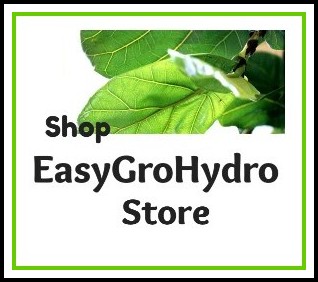Container Gardening Made Easy with Terraponics
Container gardening is a great way to to dress up your porch or patio with a splash of color - or start a garden with vegtables and herbs.
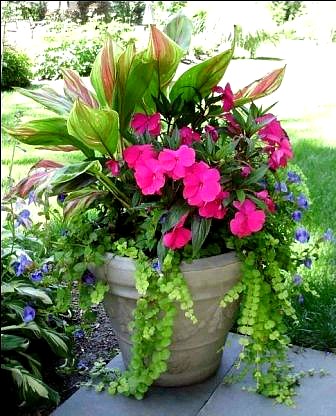
Unfortunately, container gardens need constant attention to stay healthy.
In hot, dry weather, there never seems to be enough water. Twice a day watering is not out the ordinary.
If you travel or have a busy schedule (and who doesn't!), maintaining container planters can be a chore.
"Terraponic Gardening" Takes the Worry Out of Maintaining Outdoor Planters
Using hydroponic technology, we've developed a new and exciting way to grow outdoor container plants that makes plant care easy.
It's called terraponics. "Terra" means soil - we use hydroponic technology with soil plants for outdoor growing.
What is Terraponics and How It Can Work For You
Growing in soil, outdoor planters need watering almost every day in hot weather. That's because plants more water in warm temperatures and the sun literally "bakes" the moisture out of the pot.
Potting soil can only hold a limited amount of water and can't stay wet for extended periods. Waterlogged soil will damage the plant's root system quickly.
"Terraponic Gardening" replaces potting soil with unique clay pebbles called LECA (Lightweight Expanded Clay Aggregate).
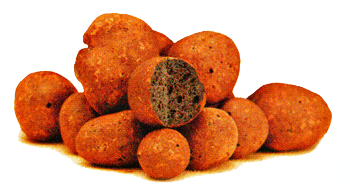 Closeup of LECA pebbles
Closeup of LECA pebblesLECA pebbles are a man made ceramic that never rots, decays, or decomposes. Perfect for outdoor growing!
LECA pebbles have capillary properties that "wick" moisture (and nutrients) up to the plant's roots from the reservoir at the bottom of the pot.
Extra water is available to the plant in the reservoir at the bottom of the pot. No more daily watering and there's no worry about mold or decay that you would get with soil.
Diagram of a Terraponic Planter
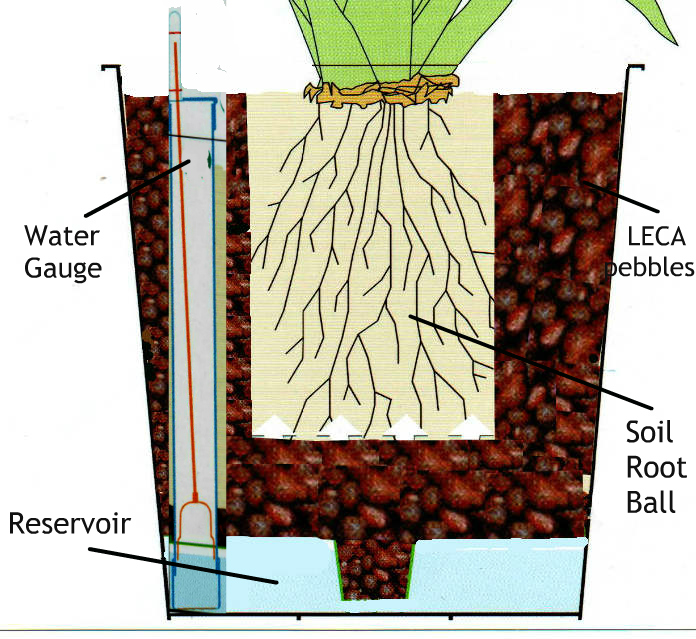
|
Water Gauge |
Shows at a glance how much water is in the reservoir at the bottom of the pot | |
|
LECA Pebbles |
Wick moisture up from the reservoir to the plant while promoting air circulation around the roots. | |
|
Reservior |
Because LECA pebbles are ceramic and won't rot or decay, water can be stored at the bottom of the grow pot. (Simply not possible with soil.) |
How the Terraponic System Works
Caring for plants in our Terraponic System is as easy as 1. 2. 3.
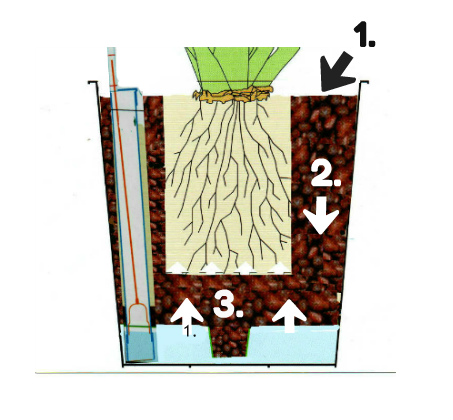
1. Pour nutrient solution into the planter at the top. Nutrient solution passes through pebbles to the reservoir at the bottom.
2. LECA pebbles "wick" the nutrient solution up to the plant as needed.
3. Refill the reservoir when the water gauge reads empty.
It's that easy!
Plants quickly adapt to the superb growing conditions of the LECA pebbles and in a short time they actually grow new water roots that reach out into the clay pebbles.
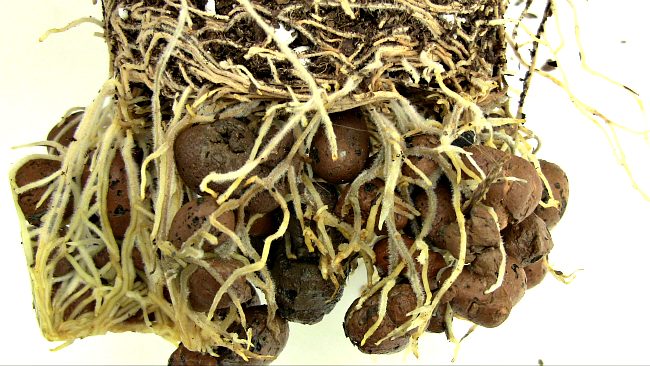 Closeup of roots growing in a terraponic system. New water roots have formed in the LECA pebbles below the root ball and provide the moisture for the plant. Notice original soil roots at top.
Closeup of roots growing in a terraponic system. New water roots have formed in the LECA pebbles below the root ball and provide the moisture for the plant. Notice original soil roots at top.With Terraponics your plants practically take care of themselves - no more "everyday watering" necessary!
++++ image of outdoor planters +++++
Providing the right amount of water and nutrients - in any kind of weather - insures long lasting beauty for all your patio and balcony plants.
Planting with Terraponics
- Choose culture pot that is at least 1-2" wider and 1-2" deeper than plant's existing root ball.
- Insert water gauge in culture pot.
- Fill bottom of culture pot with 2-3" of LECA pebbles.
- Remove the soil plant from its grow pot and remove any loose soil.
- Position plant on top of pebbles.
- Fill space between root ball and culture pot.
- Pack down pebbles around the plant (and in between the plants if you are planting several plants in the pot). Be aggressive - you will not injure the roots.
- Cover top of root ball with 1" of pebbles. (If there's not enough room for 1" of pebbles at the top, remove plant and start over by planting deeper. Remove some soil from the bottom of the root ball if necessary.
Plant Care
- Water to Maximum on the water gauge. Try to get the water level up to the bottom of the plant's roots.
- When water gauge reads Minimum rewater to Maximum. This can vary from several days to more than a week depending on the amount of sun the plant gets and the temperature.
As the roots grow into the pebbles you won't have to be nearly as careful with watering.
